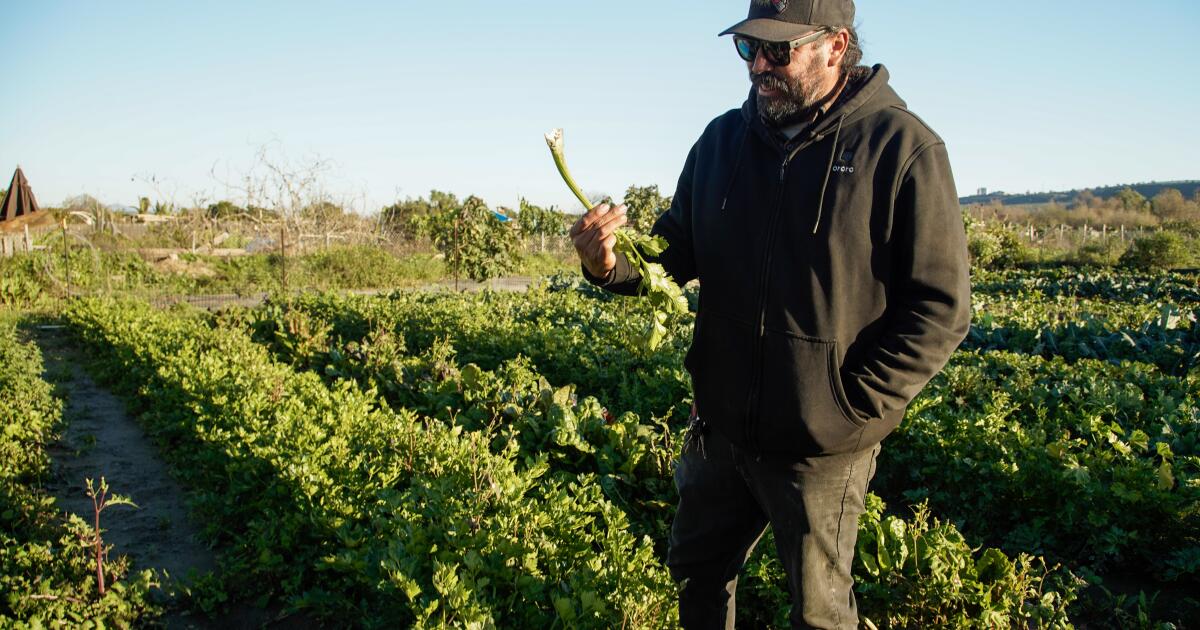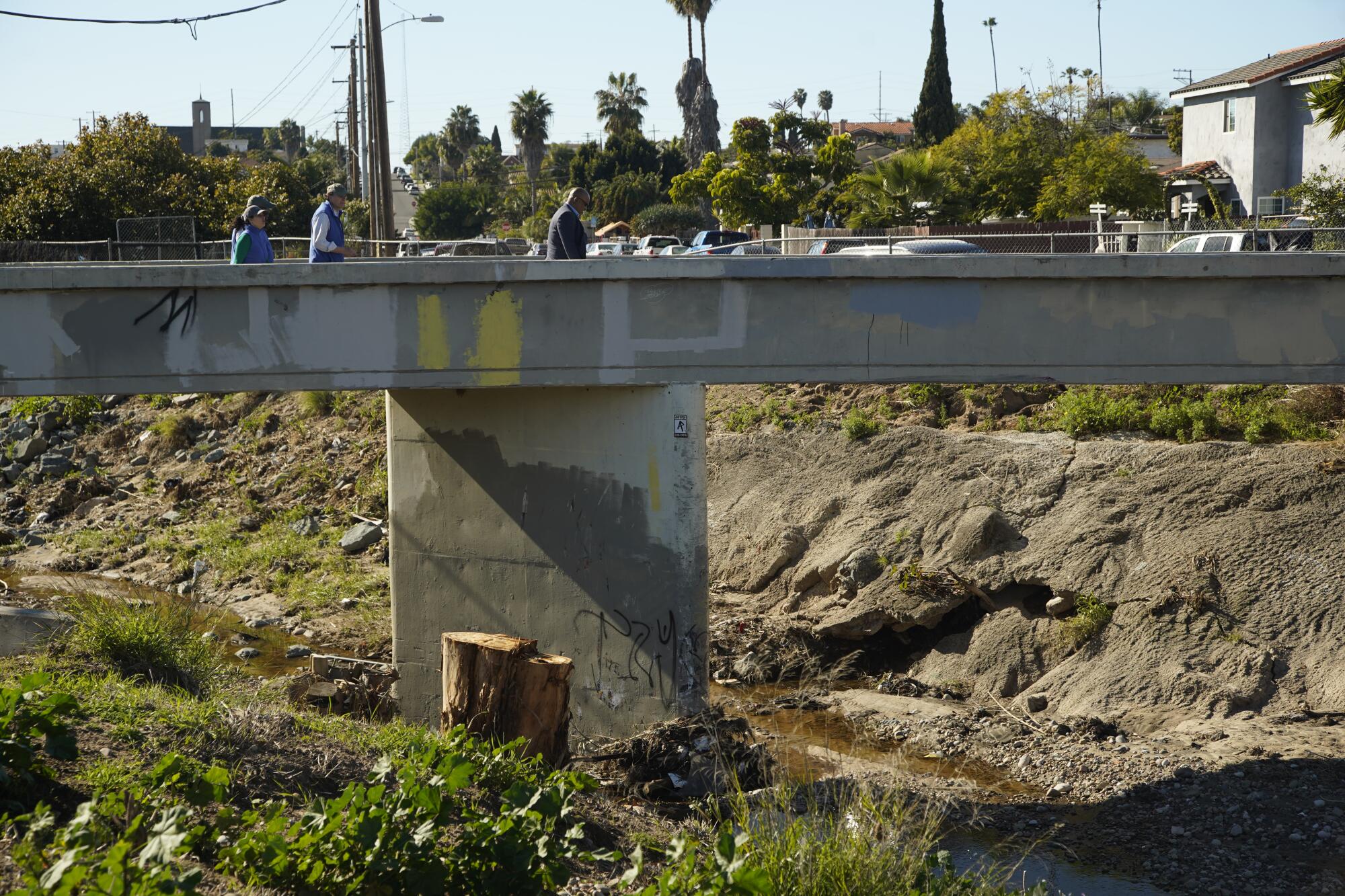
Erik Rodriguez’s broccoli had bloomed larger than a Valentine’s Day bouquet.
His celery was long and firm and one radish rivaled a baseball in size. Rodriguez used a knife to slice it open, revealing flesh that was bright and gleaming.
Recent flooding meant all of it had to be thrown out.
“I’m just tired of starting over,” he said.
Rodriguez, 44, co-runs Pixca Farm, one of several sites in the Tijuana River Valley that lost crops after last month’s historic storm.
Federal officials are now evaluating whether they can help.
Leaders with the U.S. Department of Agriculture toured several parts of the county Monday afternoon, including Pixca, to consider giving aid that could help small farmers and people living along waterways.

Deputy Secretary of Agriculture Xochitl Torres and other officials tour the flood- damaged neighborhoods in San Diego.
(Alejandro Tamayo / The San Diego Union-Tribune)
Officials with the city of San Diego signaled particular interest in the department’s Emergency Watershed Protection program, which can assist with everything from removing debris from streams to planting erosion-halting vegetation.
The initiative can’t reimburse for work already under way but can help fund future efforts. If approved, the money could arrive within weeks, according to Carlos Suarez, the state conservationist and an official within the agriculture department.
“From what I’m seeing,” he told reporters next to the Chollas Creek watershed, “this definitely has the characteristic of a site that would qualify for funding.”
Xochitl Torres Small, deputy secretary of agriculture, was one of several federal leaders to meet with local officials, including Todd Snyder, director of San Diego’s storm water department.
The group started near the city’s Southcrest neighborhood.
That area was hit especially hard Jan. 22. On Monday, the Chollas channel was filled with mud. Wind rippled pools of standing water. Some metal poles near Southcrest Park were bent completely over while others were frozen at a 45 degree angle, as if straining under an invisible wave.

Deputy Secretary of Agriculture Xochitl Torres and other officials on Monday tour the flood-damaged neighborhood of Mountain View in San Diego.
(Alejandro Tamayo / The San Diego Union-Tribune)
Farther west, by the intersection of Beta and Birch streets, the roads sometimes seemed to be more dirt than asphalt. Caution tape blocked off one home. Plastic covered the entryway to another. Dumpsters lined the sidewalks, and metal clanged as men filled each with debris.
Just north of the U.S.-Mexico border, officials said hundreds of people planted food and flowers through the Tijuana River Valley Community Garden, but at least two farmers had recently quit the area.
The land has been flooding around once a year, according to Ann Baldridge, executive director of the Resource Conservation District of Greater San Diego County. She said the area used to be able to go years between destructive rains.
Leaders repeatedly blamed climate change and aging infrastructure, among other problems.
Rodriguez, of Pixca, is now waiting for the ground to dry so he can tear up his ruined vegetables. (Farmers are supposed to discard any food from flooded soil as the water can host a range of contaminants.)
In the meantime, he’s been tinkering with two generators and a tiller that were also damaged in the storm.
“I just, literally, want to grow food and feed people,” he said.






